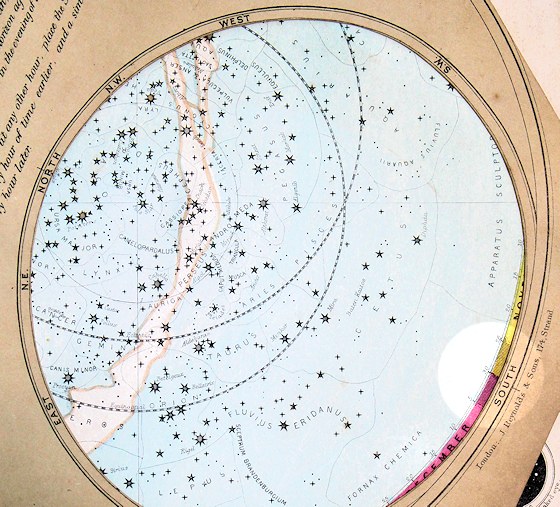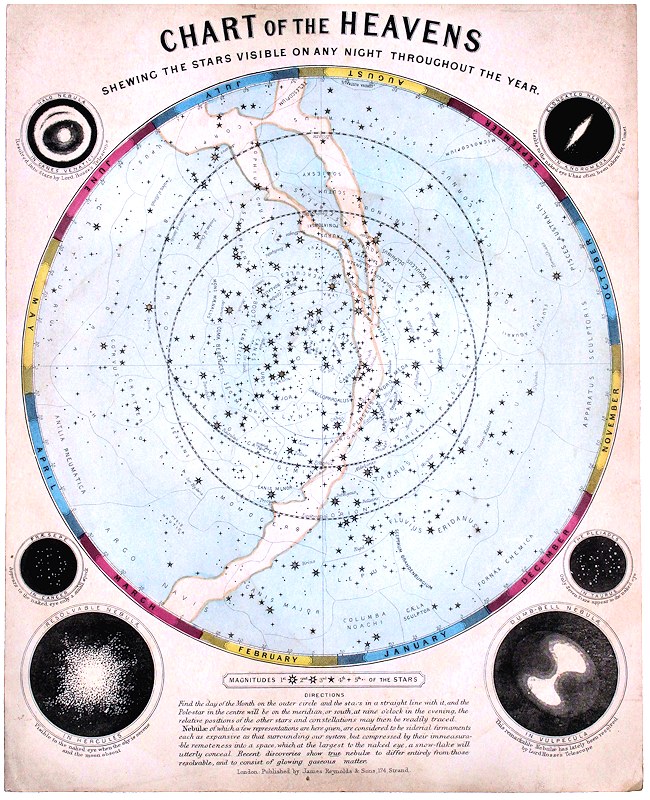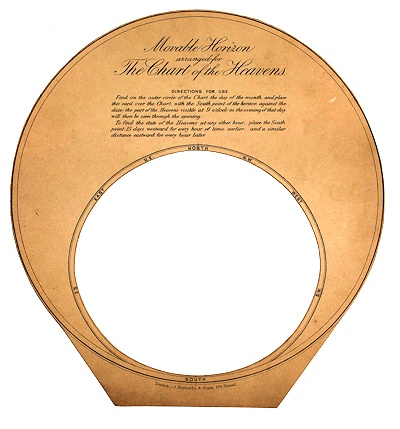 |
|
| News About Us Membership Events Links |
|
Astronomical Print
James Reynolds was well known as a prolific publisher of scientific subjects, educational diagrams and all types of maps in the nineteenth century. The main diagram illustrates the constellations and Milky Way encircled by a scale indicating months of the year. The chart has a tissue paper backing with punched holes in the card so that it could be held up to the light, the principal stars appearing as small bright dots against a dark background. The brightness of the stars as seen from the Earth are indicated by the varying size of the hole and symbols along with a numerical scale in which the lower numbers mean greater brightness. The brief instructions for use are given at the bottom of the page: Find on the outer circle of the Chart the day of the month, and place this card over the Chart, with the South point of the horizon against the date; the part of the Heavens visible at 9 o'clock in the evening of that day will then be seen through the opening. To find the state of the Heavens at any other hour, place the South point 15 days westward for every hour of time earlier, and a similar distance eastward for every hour later. The highlighted detail, in the photograph below, shows the South point placed on the first day of December. 
The Victorian stargazers delight and fascination with celestial matters permeated all levels of society in Britain, accordingly these prints enjoyed a broad audience and played an important role in popularising astronomy.
|
|
|
Home | News | About Us | Membership | Events | Links | Contact | Item of the month | Articles |
| Copyright © The Ephemera Society 2025. All Rights Reserved. |

 Accompanying the hand-tinted astronomical print is a Moveable Horizon arranged for the Chart of the Heavens; a clever device facilitating which part of the night sky will be visible at 9 o'clock in the evening on any day of the year.
Accompanying the hand-tinted astronomical print is a Moveable Horizon arranged for the Chart of the Heavens; a clever device facilitating which part of the night sky will be visible at 9 o'clock in the evening on any day of the year.